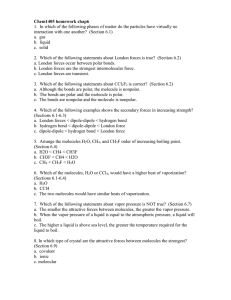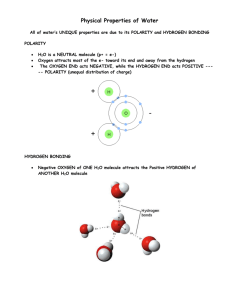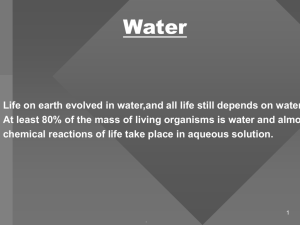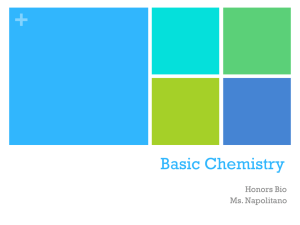solution to homework chap6.doc
advertisement
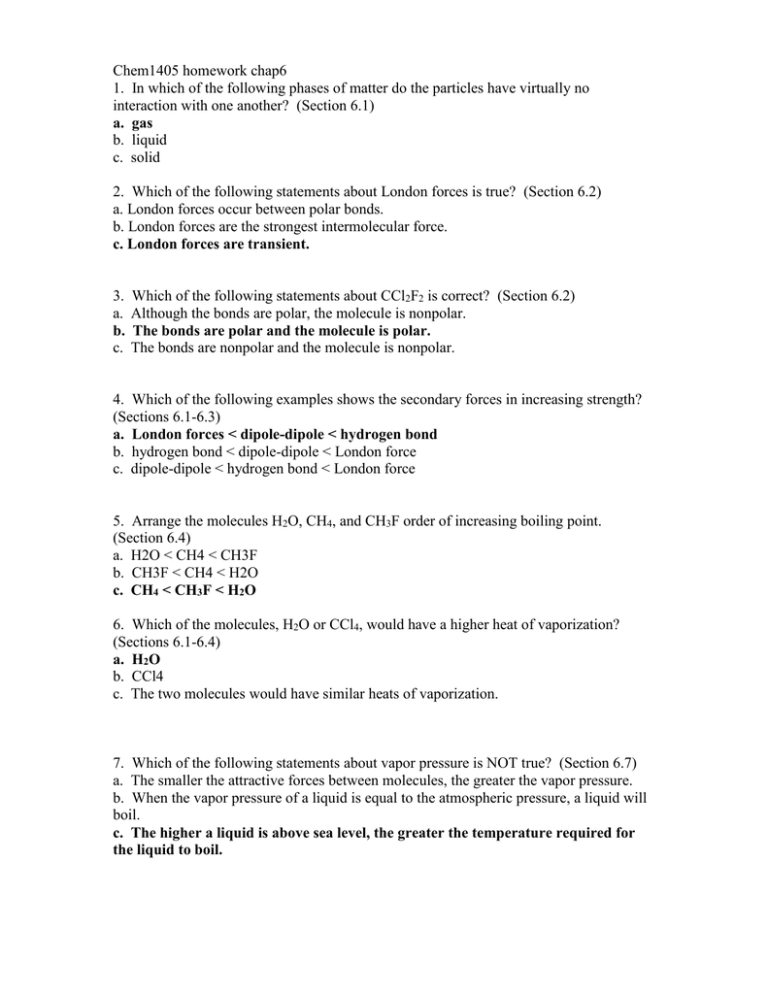
Chem1405 homework chap6 1. In which of the following phases of matter do the particles have virtually no interaction with one another? (Section 6.1) a. gas b. liquid c. solid 2. Which of the following statements about London forces is true? (Section 6.2) a. London forces occur between polar bonds. b. London forces are the strongest intermolecular force. c. London forces are transient. 3. a. b. c. Which of the following statements about CCl2F2 is correct? (Section 6.2) Although the bonds are polar, the molecule is nonpolar. The bonds are polar and the molecule is polar. The bonds are nonpolar and the molecule is nonpolar. 4. Which of the following examples shows the secondary forces in increasing strength? (Sections 6.1-6.3) a. London forces < dipole-dipole < hydrogen bond b. hydrogen bond < dipole-dipole < London force c. dipole-dipole < hydrogen bond < London force 5. Arrange the molecules H2O, CH4, and CH3F order of increasing boiling point. (Section 6.4) a. H2O < CH4 < CH3F b. CH3F < CH4 < H2O c. CH4 < CH3F < H2O 6. Which of the molecules, H2O or CCl4, would have a higher heat of vaporization? (Sections 6.1-6.4) a. H2O b. CCl4 c. The two molecules would have similar heats of vaporization. 7. Which of the following statements about vapor pressure is NOT true? (Section 6.7) a. The smaller the attractive forces between molecules, the greater the vapor pressure. b. When the vapor pressure of a liquid is equal to the atmospheric pressure, a liquid will boil. c. The higher a liquid is above sea level, the greater the temperature required for the liquid to boil. 8. In which type of crystal are the attractive forces between molecules the strongest? (Section 6.9) a. covalent b. ionic c. molecular 9. Hint: Hydrogen bonds require an H covalently bonded to an O, N, or F. Answer c is the only pair where this occurs in both compounds. 10. Hint: Each of these molecules has only London Dispersion forces as intermolecular forces. Molecules with higher molecular weight have the stronger London Dispersion forces, therefore, C8H18 > C6H14 > C4H10> C3H8. 11. Hint: (b) has the greater heat of vaporization because it can form hydrogen bonds between molecules, whereas (a) cannot. 12. a c b These are ordered by increasing strength of intermolecular forces, ionic > hydrogen bond > London dispersion forces. 13. Hint: Water molecules interact through both dipole–dipole forces and hydrogen bonds while hexane can interact only by London forces. The secondary attractive forces between water molecules are much stronger than those in hexane, and water will consequently have a higher surface tension. 14. Hint: H2S < H2O < KCl These are ordered by decreasing strength of secondary forces, dipole-dipole < hydrogen bond < ionic forces. 15. Hint:
